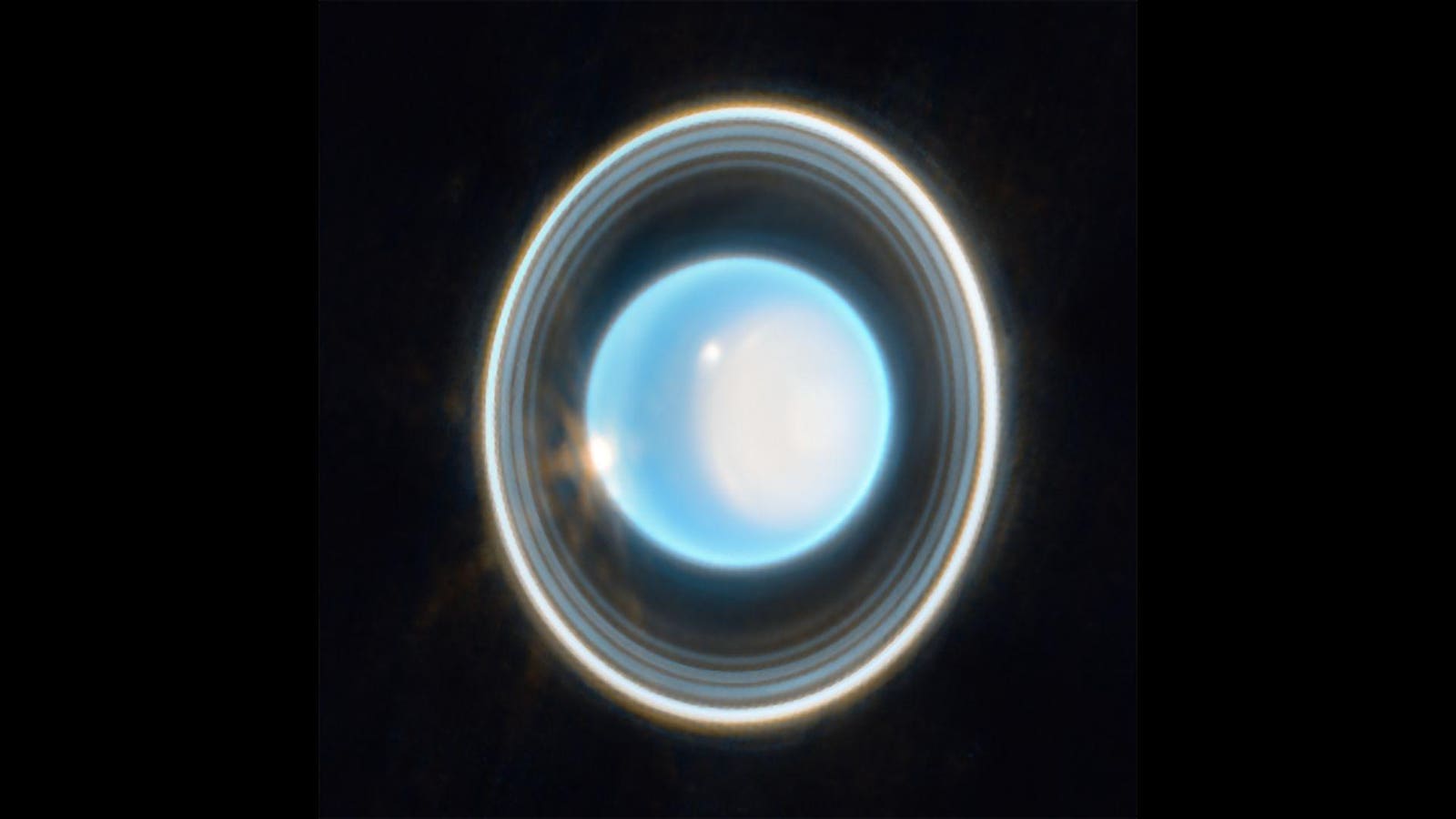This zoomed-in image of Uranus, captured by the Near-Infrared Camera on NASA’s James Webb Space Telescope on Feb. 6, 2023, reveals stunning views of Uranus’ rings.
NASA, ESA, CSA, STScI
Uranus, an ice giant planet and the seventh planet from the sun, may be warmer than previously thought. The third largest planet in the solar system — previously thought to be the coldest despite Neptune being farther from the sun — now appears to emit much more heat than it receives from the sun.
Most planets generate their own heat, so they emit more energy than they receive from the sun. That’s the case with Jupiter, Saturn and Neptune. It’s thought that the heat is leftover from the planet’s formation. However, data from Uranus — which is restricted to the one time NASA visited the planet 39 years ago — suggested that Uranus had no internal heat. That confused planetary scientists because it suggested Uranus was much older than the other planets.
“Since Voyager 2’s flyby, everybody has said Uranus has no internal heat,” said Amy Simon, a planetary scientist at NASA’s Goddard Space Flight Center in Greenbelt, Maryland. “But it’s been really hard to explain why that is, especially when compared with the other giant planets.”
Uranus: New Observations
New observations of reflected light from Uranus by Lowell Observatory and the Hubble Space Telescope, published in the Monthly Notices of the Royal Astronomical Society journal by scientists at NASA and Oxford University, suggest otherwise.
Creating a computer model of the planet’s atmosphere from decades of observations from ground- and space-based telescopes — from hazes and clouds to seasonal changes — the scientists figured out that Uranus actually reflects back 15% more energy than it receives from the sun. That’s much less than most planets, but warmer than long believed and indicating that it does have an internal heat source.
Uranus as captured by NASA’s Voyager 2 on January 14, 1986.
NASA/ JPL
Mission To Uranus
Humanity’s only glimpse of Uranus was in 1986 when NASA’s Voyager 2 spacecraft photographed it during its Grand Tour of the planets. A lot of its moons were imaged, too, but only some of their surface were in its view.
The Uranus Orbiter and Probe (UOP) is a concept for a mission to tour the Uranus system — including the ice giant itself and its moons — though the chances of it launching in time now seem slim. The need for a slingshot from Jupiter means that launch opportunities exist in the early 2030s for a journey to take 12-13 years. That window opens every 12 years or so when Jupiter returns to roughly the same position in the solar system.
What Color Is Uranus?
The news about the temperature of Uranus comes in the wake of another basic characteristic of the planet being reassessed. A study last year concluded that the belief that Uranus is pale cyan and Neptune is a deep azure blue is wrong. The study stated that the planets are actually a similar shade of greenish blue, and that the error was down to inaccurate color in NASA’s Voyager 2’s camera, which captured Uranus and Neptune in 1986 and 1989, respectively.
Moons Of Uranus
There are 27 moons around Uranus, four of which — Umbriel, Titania, Oberon and Ariel — are geologically active, and possibly ocean worlds. It’s one reason NASA needs to send a mission. Observations last year by the James Webb Space Telescope indicate that Ariel may have an underground liquid ocean. Its surface was found to contain carbon dioxide ice, mostly on the side of the moon that faces away from the direction it orbits, which may be coming from a liquid ocean beneath the surface.
Wishing you clear skies and wide eyes.
